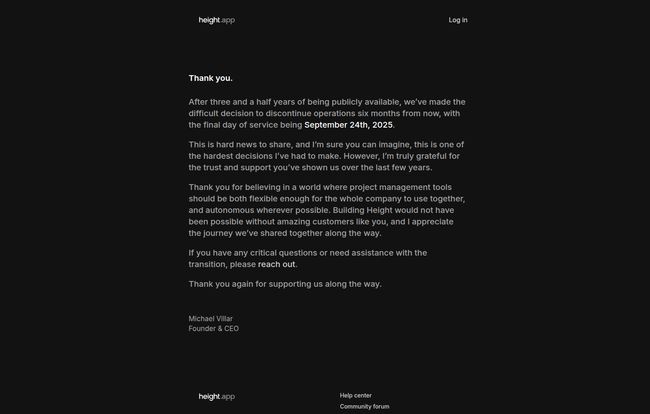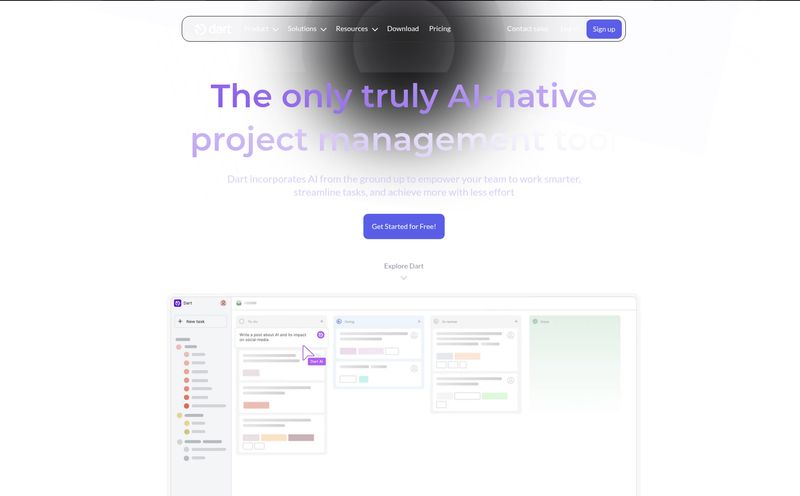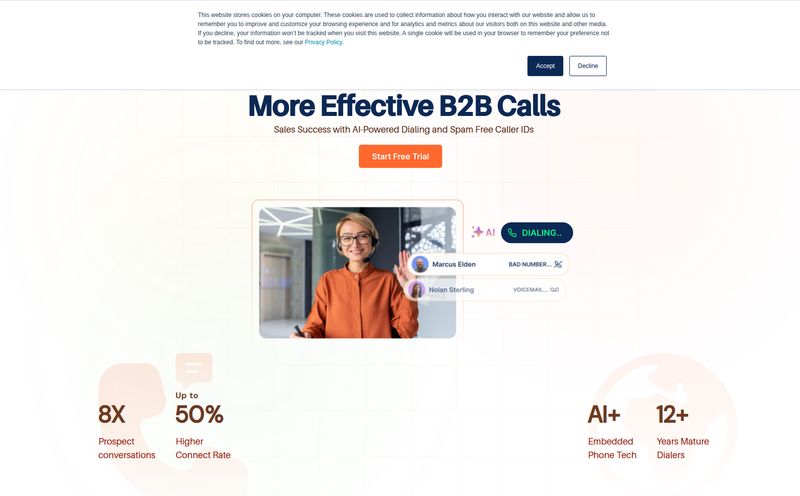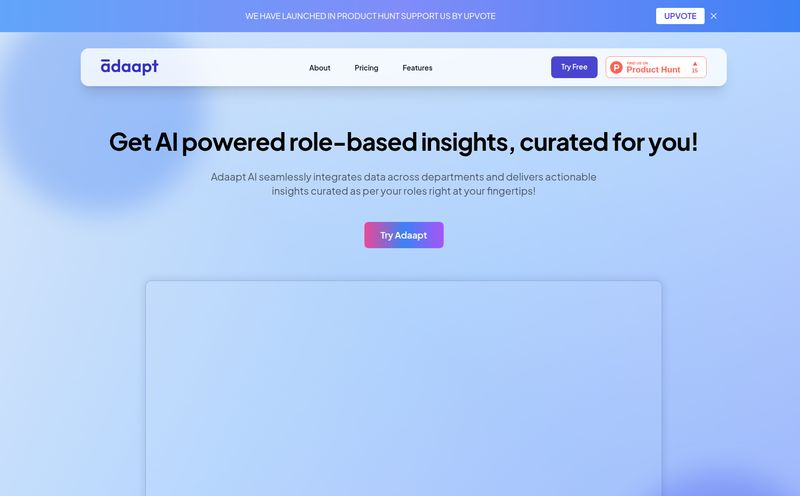You know, in the world of SEO and digital project management, you see a lot of tools come and go. It’s the nature of the beast. Some flash and fade, others get acquired and absorbed into a bigger corporate machine. But every once in a while, one comes along that really makes you sit up and take notice. For me, and a lot of product teams, that tool was Height.
And now, it’s heading to the great SaaS graveyard in the sky. As of September 24th, 2025, Height will be discontinuing its operations. It’s always a bit of a gut punch when a tool you admire closes up shop. It’s not just about losing a piece of software; it’s about an idea, a vision for a better workflow, that didn’t quite make it across the finish line. So, I thought it was worth taking a moment to look back at what Height was, what it tried to do, and maybe speculate a little on its untimely demise. A sort of digital post-mortem, if you will.
So, What Was Height App, Anyway?
At its core, Height was designed to be a smarter project collaboration tool, specifically for product teams. Let's be real, the market is crowded. You can’t swing a cat without hitting a dozen project management platforms—Jira, Asana, Monday.com, ClickUp… the list goes on. Each one promises to be the ultimate solution to all your organizational woes.
But Height’s angle was different. It wasn’t just about creating tasks and moving cards on a Kanban board. Their secret sauce was AI-powered automation. The goal, as founder Michael Villar put it, was to build project management tools that were “flexible enough for the whole company to use together, and autonomous wherever possible.” They wanted to offload the tedious chores. The stuff that nobody wants to do but everyone has to. Think bug triage, backlog pruning, and keeping specifications updated. It aimed to be the brilliant, autonomous assistant you always wished you had. A tool that didn't just hold your tasks, but actively helped you manage them.

Visit Height
The Features That Genuinely Made Us Look Twice
This wasn't just another pretty interface. Height had some serious horsepower under the hood, particularly with its “Autonomous features.” This is the stuff that got tech nerds like me excited.
- AI-Powered Task Management: This was the main event. Height could automatically assign tasks, detect and link duplicates, and even close out tasks based on linked activities, like a merged pull request in GitHub. It was about reducing the manual clicks that eat away at a developer’s day.
- Intelligent Bug Triage: Anyone who has ever managed an engineering backlog knows the pain of bug triage. It's a relentless flood. Height's AI could help categorize incoming bug reports, assign priorities, and even route them to the right team based on the content of the report. A genuine time-saver.
- Automated Backlog Pruning: Backlogs are where good ideas go to die. They become bloated, unwieldy digital messes. Height had features to help automatically surface stale tasks, prompt teams to review them, and keep the backlog from becoming a monster.
And it didn't skimp on the essentials, either. It had robust integrations with the tools teams actually use—Slack, GitHub, Figma, Sentry, Zendesk. You could have real-time chat within tasks, create tasks from a Slack message, and link designs directly from Figma. It was built with a modern product team’s workflow in mind, not some generic corporate structure. It was, for lack of a better word, smart. Its' a shame that smarts alone aren't always enough.
A Quick Look at the Pricing Plan
Before we get to the sad part, let's talk money. Height’s pricing was, in my opinion, pretty competitive and well-thought-out. They had a structure that could grow with a company, which is always a good sign.
| Plan | Price | Best For |
|---|---|---|
| Basic | $0 | Small teams of up to 10 members just getting started. |
| Core | $15 per member/month | Growing teams needing more automation and up to 50 guests. |
| Business | $24 per member/month | Larger organizations needing advanced security and unlimited guests. |
That free tier was incredibly generous, offering unlimited tasks for up to 10 people. It was a fantastic way to get teams hooked on the platform’s power without a credit card. The paid tiers scaled reasonably, unlocking more powerful features and capacity as you went. It was a classic SaaS model, executed well.
The Elephant in the Room: The Shutdown
Okay, let’s get to it. On March 24th, 2025, the announcement dropped. After three and a half years, Height was calling it a day. In his message to users, CEO Michael Villar was candid and heartfelt:
“This is hard news to share, and I’m sure you can imagine, this is one of the hardest decisions I’ve had to make. However, I’m truly grateful for the trust and support you’ve shown us over the last few years.”
It’s a tough read because you can feel the passion they had for the product. Building a tool like Height is a monumental effort. It’s years of coding, designing, marketing, and supporting. To have to shut it down… man, that’s just brutal. It’s a stark reminder that even with a great product and a clear vision, success is never guaranteed.
So What Happened? A Bit of Educated Speculation
The official announcement doesn't give a specific reason, and I wouldn't expect it to. But as someone who watches this space, I have a few theories. This is just my two cents, of course.
First, the market is an absolute bloodbath. You’re not just competing with other startups; you're competing with Jira. Atlassian’s behemoth is so deeply entrenched in enterprise and development culture that getting teams to switch is like trying to change a river’s course with a teaspoon. Even if your tool is objectively better in some ways, the switching costs—migrating data, retraining the entire company, changing ingrained habits—are colossal. Height was a beautiful sailboat, but it was trying to navigate a sea full of battleships like Jira and Asana.
Second, the AI angle, while brilliant, might have been a double-edged sword. True, useful AI is incredibly difficult and expensive to build and maintain. It's possible the tech wasn't yet reliable enough for some teams, or the cost of running the AI infrastructure outpaced revenue growth. We are in an AI hype cycle right now, but delivering on the promise is a whole other ball game.
Finally, it could just be the classic startup story. Ran out of funding, couldn't find a sustainable growth model, or the founders just got burned out. It’s a marathon, and not everyone makes it to the finish.
Frequently Asked Questions About Height
- What exactly was the Height app?
- Height was an AI-powered project management and collaboration tool designed primarily for product and engineering teams. It focused on automating tedious tasks like bug triage and backlog management to improve workflow efficiency.
- Why is Height shutting down?
- The company announced they made the difficult decision to discontinue operations. While they didn't state a specific reason, it's common for startups to face challenges with market competition, funding, or finding a sustainable business model in the crowded project management space.
- When is Height's final day of service?
- The final day of service for Height is officially September 24th, 2025. Users will need to migrate their data to another platform before that date.
- Did Height have a free plan?
- Yes, Height had a very generous free "Basic" plan that allowed for up to 10 members and unlimited tasks. This was one of its key attractions for smaller teams and startups.
- What are some good alternatives to Height now that it's closing?
- If you're looking for a new home for your projects, some strong alternatives include Jira (the industry standard for developers), Asana (great for cross-functional team collaboration), ClickUp (known for its customizability), and Linear (another modern, developer-focused tool that shares some of Height's design philosophy).
A Final Toast to an Ambitious Idea
So, goodbye, Height. It's a bummer to see you go. You were one of the good ones, a tool that genuinely tried to innovate in a space that can often feel stagnant. You took a swing at making project management less of a chore and more of an intelligent partner, and that’s a mission worth celebrating.
To the team at Height, thank you for the effort. Thank you for building something cool. We’ll be watching to see what you all do next. For the rest of us, it’s a lesson in the fragility of innovation. Sometimes, the best ideas don’t win. But they always push the conversation forward. And for that, we can be grateful.
Reference and Sources
- Height Official Website (Shutdown Announcement)
- Jira Software
- Asana
- ClickUp
- Linear



